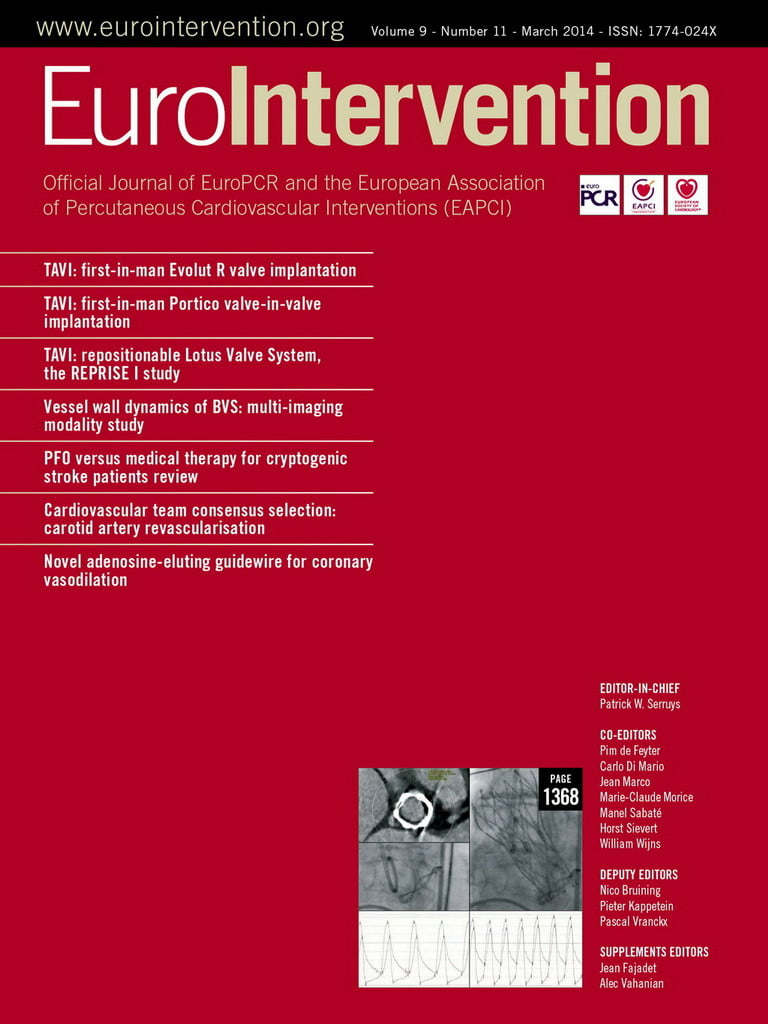Recently, Robert Byrne and colleagues published in Nature Reviews Cardiology a remarkable overview of trials in the field of drug-coated balloons1. In this paper, he mentioned the PEPCAD III presentation at the American Heart Association Scientific Sessions in Florida in 2009. Patients in the PEPCAD III trial were randomised to either the paclitaxel drug-eluting balloon/bare metal stent system (n=312) or the sirolimus DES (n=325). Unfortunately, the results showed that the paclitaxel-eluting balloon was inferior to a sirolimus-eluting stent in terms of late lumen loss. Five years later this study has so far not been published in the literature; in fact, the study design is not listed on the ClinicalTrials.gov website. Robert Byrne honourably mentioned the study in his overview but the study could not be included in meta-analysis since it was never published.
A slightly different scenario was described in last month’s issue when we discussed the failure of the PharmaSonics technology and the long, long road we travelled towards finally succeeding in publishing our negative results paper on this technology2. Another couple of examples spring to mind. For example, in the ACTION study, we realised that the actinomycin D-eluting stent had a detrimental effect on the edge of the stent and naturally this stent was no longer studied3. At the same time, a study involving the Quanam stent, using the paclitaxel derivative 7-hexanoyltaxol, was stopped early due to excessive cardiac deaths4. Remarkably, both these papers were published in the same issue of JACC. Although they were not often cited, the publications did help to shape our vision of the future and the pathways that needed to be taken to move on from these failures.
From an editorial point of view, we recently encountered our own experience with a major negative trial. The STACCATO trial was one of the rare studies in which transapical transcatheter aortic valve implantation was randomised with surgical aortic valve replacement. The study was stopped due to safety concerns within the transapical arm. The paper was peer reviewed, and the resulting discussion at the Editorial Board led us to consider rejection with the reasoning that this paper would send out the wrong message and contaminate future meta-analysis. After lengthy discussions, we elected finally to accept the paper and, as it turned out, the results of STACCATO were not an isolated case as similar results have since come to light. So the lesson here was, if the journal had turned down the STACCATO paper, the results of the later meta-analysis would possibly have become skewed.
As Editors, the case of the PEPCAD III study in our opening above raises the question as to what happens when data are unpublished. In an interesting blog from Faraz Ahmed from the Cambridge Centre for Health Services Research (CCHSR), the aspect of transparency in medical publishing is noted6. He argues that one should be careful when considering whether “evidence is actually evidence”. He in turn refers to a report from the Health Technology Assessment on publication biases. Amongst other main points, the authors of this HTA report prove convincingly that studies with significant or positive results are more likely to be published than those with non-significant or negative results7. In this light, it is not surprising that governmental agencies and other funding bodies are pushing hard for the registration of trial designs and also insisting on the publication of a study’s results. In fact, these concerns over unpublished negative data have led the European Medicines Agency to draft a policy for the publication of complete clinical trial data8 and, together with the EU, legal measures are being discussed.
Faraz Ahmed’s piece is in essence a call –to “think about unpublished research and do something about it”– a call that is becoming increasingly more important not only for researchers, government agencies, industry and journals but also for patients whose care is built on our evidence-based medicine.

